Nvidia GeForce RTX 2080 Ti and RTX 2080 Founders Edition Reviews
September 19, 2018 | 14:00
Companies: #nvidia
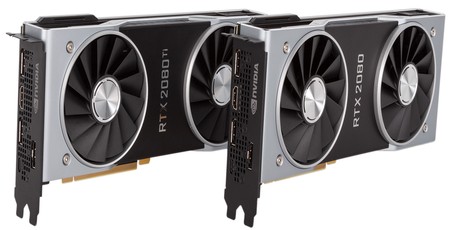
Manufacturer: Nvidia
GeForce RTX 2080 Ti Founders Edition
UK price (as reviewed): £1,099.00 (inc. VAT)
US price (as reviewed): MSRP $1,199.00 (exc. tax)
GeForce RTX 2080 Founders Edition
UK price (as reviewed): £749.00 (inc. VAT)
US price (as reviewed): MSRP $799.00 (exc. tax)
Last week, we brought you up to speed on all the major new changes in the Turing architecture that’s powering Nvidia’s new GeForce RTX 2080 Ti and RTX 2080 graphics cards. Today, we can finally show you how these GPUs perform, and we’ll be starting with the swish new Founders Edition cards direct from Nvidia. In the coming days and weeks, we’ll also look at a variety of third-party GeForce RTX models that we’ve also been sent.
The GeForce RTX launch is notable for multiple reasons. Starting with a simple strategy observation, we’d usually expect the XX80 card first and a good few months before the more powerful XX80 Ti, but with RTX both are launching at once. These will be followed by the RTX 2070 in October, and an RTX Titan is also at least a possibility, but nothing on that front has been confirmed.
Secondly, there’s clearly been a big change in the physical design of the Nvidia reference model, which these days is known as the Founders Edition. The dual-fan cooler makes for a new aesthetic and, more importantly, will make a big difference to noise and thermals in a way that potentially places pressure on mid-tier partner cards from Nvidia’s many board partners.
Thirdly, and most importantly, Turing is a massive architectural overhaul that sees new dedicated hardware added to provide hitherto impossible functionality to gaming GPUs, most notably real-time ray tracing (important enough to inspire the name switch from GTX to RTX) and deep learning-based image enhancement methods (i.e. DLSS). Turing represents a huge push not just on performance, but on accelerating specific tasks like these in the pursuit of ever greater visual fidelity. It’s really an attempt to change the way consumers think about PC gaming and thus graphics cards. Nvidia is betting big on this, as the new hardware enabling the new features is costly in terms of die space and production overheads, so it will be seeking to ensure that this isn’t done in vain and convince gamers (and developers) that the changes are for the best, at least at the premium end. Given that this is a space where AMD is now entirely absent, Nvidia now has a bigger-than-ever chance to mould the premium graphics arena into something very favourable to its own hardware roadmap, whatever that may be. From the outside, Turing could be read as an attempt to do just that.
| Nvidia GeForce RTX 2080 Ti FE | Nvidia GeForce RTX 2080 Ti (reference) | Nvidia GeForce GTX 1080 Ti |
Nvidia GeForce RTX 2080 FE |
Nvidia GeForce RTX 2080 (reference) |
Nvidia GeForce GTX 1080 | |
| Architecture | Turing | Turing | Pascal | Turing | Turing | Pascal |
| Codename | TU102 | TU102 | GP102 | TU104 | TU104 | GP104 |
| Base Clock | 1,350MHz | 1,350MHz | 1,480MHz | 1,515MHz | 1,515MHz | 1,607MHz |
| Boost Clock | 1,635MHz | 1,545MHz | 1,582MHz | 1,800MHz |
1,710MHz | 1,733MHz |
| Layout | 6 GPCs, 68 SMs | 6 GPCs, 68 SMs | 6 GPCs, 28 SMs | 6 GPCs, 46 SMs | 6 GPCs, 46 SMs | 4 GPCs, 20 SMs |
| CUDA Cores | 4,352 | 4,352 | 3,584 | 2,944 | 2,944 | 2,560 |
| Tensor Cores | 544 | 544 | N/A | 368 | 368 | N/A |
| RT Cores | 68 | 68 | N/A | 46 | 46 | N/A |
| Rasterisers | 6 | 6 | 6 | 6 | 6 |
4 |
| Texture Units | 272 | 272 | 224 | 184 | 184 | 160 |
| ROPs | 88 | 88 | 88 | 64 | 64 | 64 |
| Peak TFLOPS (FP32) | 14.2 | 13.4 | 11.3 | 10.6 |
10 | 8.9 |
| Peak TIPS (INT32) | 14.2 | 13.4 | N/A | 10.6 |
10 | N/A |
| Peak FP16 Tensor TFLOPS (FP16 Accumulate) | 113.8 | 107.6 | N/A | 84.8 |
80.5 | N/A |
| Giga Rays/sec | 10 | 10 | 1.1 | 8 |
8 | 0.89 |
| RTX-OPS | 78 | 76 | 11.3 | 60 |
57 | 8.9 |
| Transistors | 18.6 billion | 18.6 billion | 12 billion | 13.6 billion | 13.6 billion | 7.2 billion |
| Die Size | 754mm2 | 754mm2 | 471mm2 | 545mm2 | 545mm2 | 314mm2 |
| Process | 12nm FFN | 12nm FFN | 16nm | 12nm FFN | 12nm FFN | 16nm |
| Memory | 11GB GDDR6 | 11GB GDDR6 | 11GB GDDR5X | 8GB GDDR6 | 8GB GDDR6 | 8GB GDDR5X |
| Memory Data Rate | 14Gbps | 14Gbps | 11Gbps | 14Gbps | 14Gbps | 10Gbps |
| Memory Interface | 352-bit | 352-bit | 352-bit | 256-bit | 256-bit | 256-bit |
| Memory Bandwidth | 616GB/s | 616GB/s | 484GB/s | 448GB/s | 448GB/s | 320GB/s |
| TDP | 260W | 250W | 250W | 225W | 215W | 180W |
If you’re not familiar with these specs and particularly if you’re unsure what certain parts of it mean, we suggest you peruse our Turing architecture article, as we’re not going to be repeating ourselves here. With new INT32 cores enabling parallel floating point and integer operations, RT Cores designed to enable real-time ray tracing workflows, Tensor Cores that can work on AI-related tasks, a move to faster GDDR6, and numerous smaller changes throughout the die, there’s plenty going on, and it’s important to have some familiarity with this in order to understand what Turing is trying to do. Collectively, the new techniques are referred to as Hybrid Rendering, and this is what the made-up metric RTX-OPS tries to capture. Remember that this should only be used to very roughly gauge the difference between RTX cards; it simply isn’t relevant to non-Turing parts.
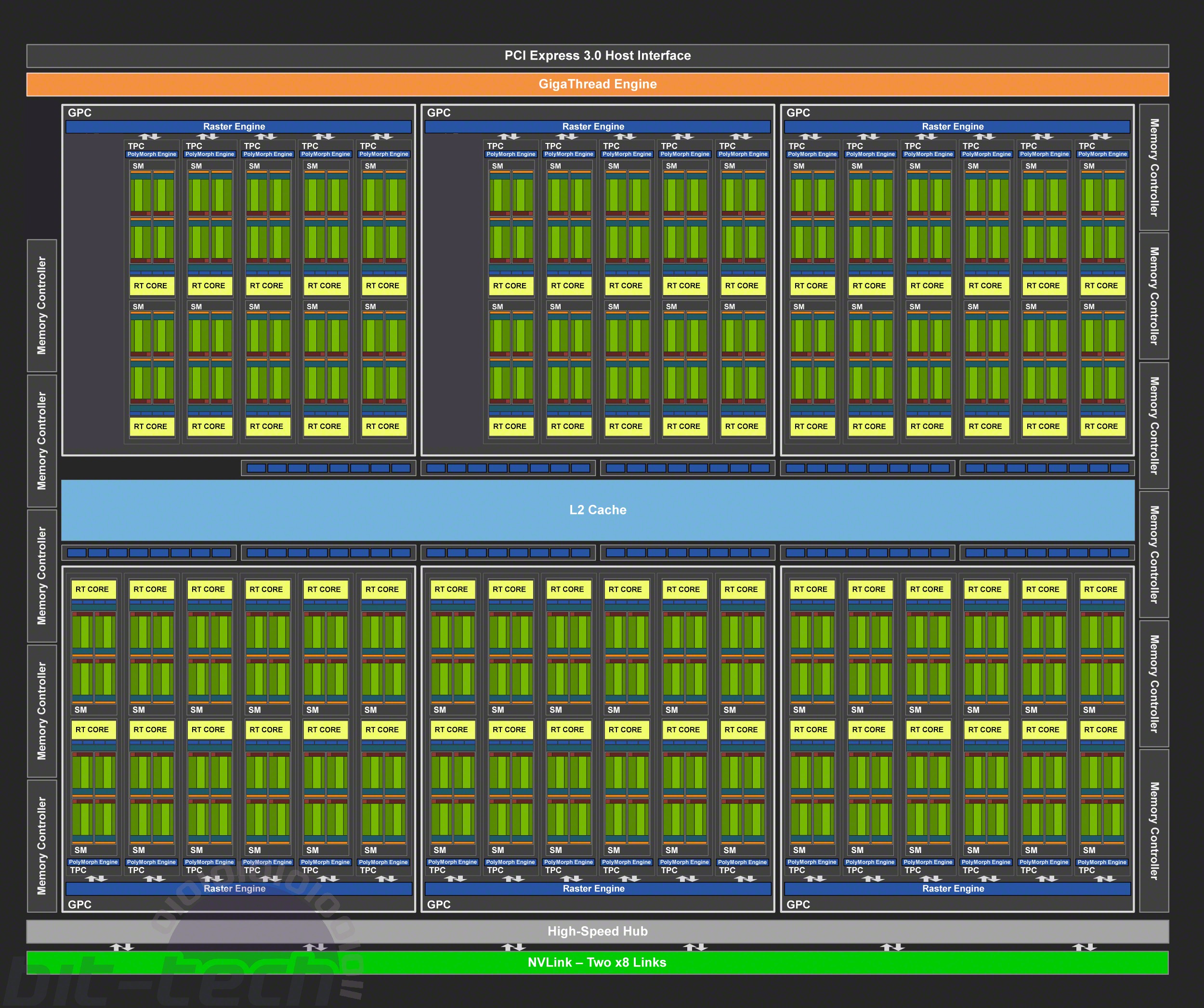
The RTX 2080 Ti is based on the monstrous TU102 GPU with an astonishing 18.6 billion transistors crammed into its 754mm2 area. However, it comes with two TPCs and thus four SMs disabled (hence the room for an RTX Titan, if Nvidia wants). One 32-bit memory controller is also disabled, bringing the interface to 352-bit and ROP count to 88. Interestingly, these specs and the 11GB frame buffer are the same as GTX 1080 Ti, although the GDDR6 memory is way faster (27 percent), and with L2 cache having doubled and advances in memory compression algorithms, Nvidia reckons effective bandwidth is up 50 percent. Note that the block diagrams we’ve made from the originals are just representations and not indicative of how SMs are disabled, as Nvidia doesn’t share this information.
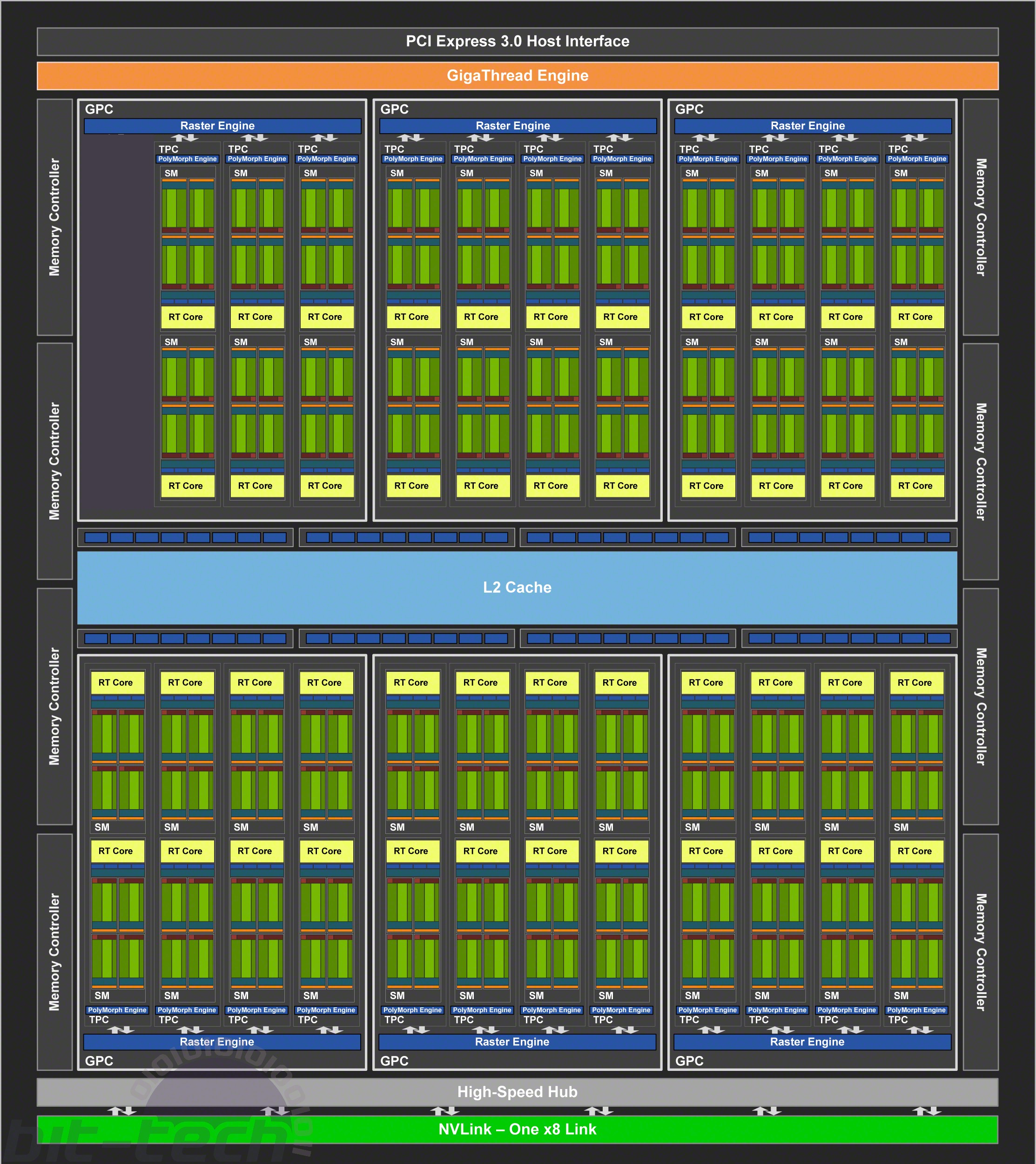
The RTX 2080 is based on the smaller-but-still-big TU104 GPU. Again, it’s not fully enabled, as one TPC out of the 24 on-die is disabled. This time the memory interface is left untouched, though, and as with RTX 2080 Ti vs GTX 1080 Ti, this means it matches the GTX 1080 on bus width, ROP count, and frame buffer size (8GB). However, with the GDDR6 clocked at 14Gbps and double the amount of L2 cache, it’s the same story with regard to memory bandwidth as well: Nvidia is looking to use speed and efficiency rather than width to increase memory throughput and keep the cores fed.
Both Founders Edition cards get a Boost clock speed increase compared to reference specs, which leads to slight changes in the various OPS calculations and also a 10W gain in TDP on both parts. Memory speeds remain fixed at 14Gbps, however.
About time we took a closer look, don’t you think?

MSI MPG Velox 100R Chassis Review
October 14 2021 | 15:04

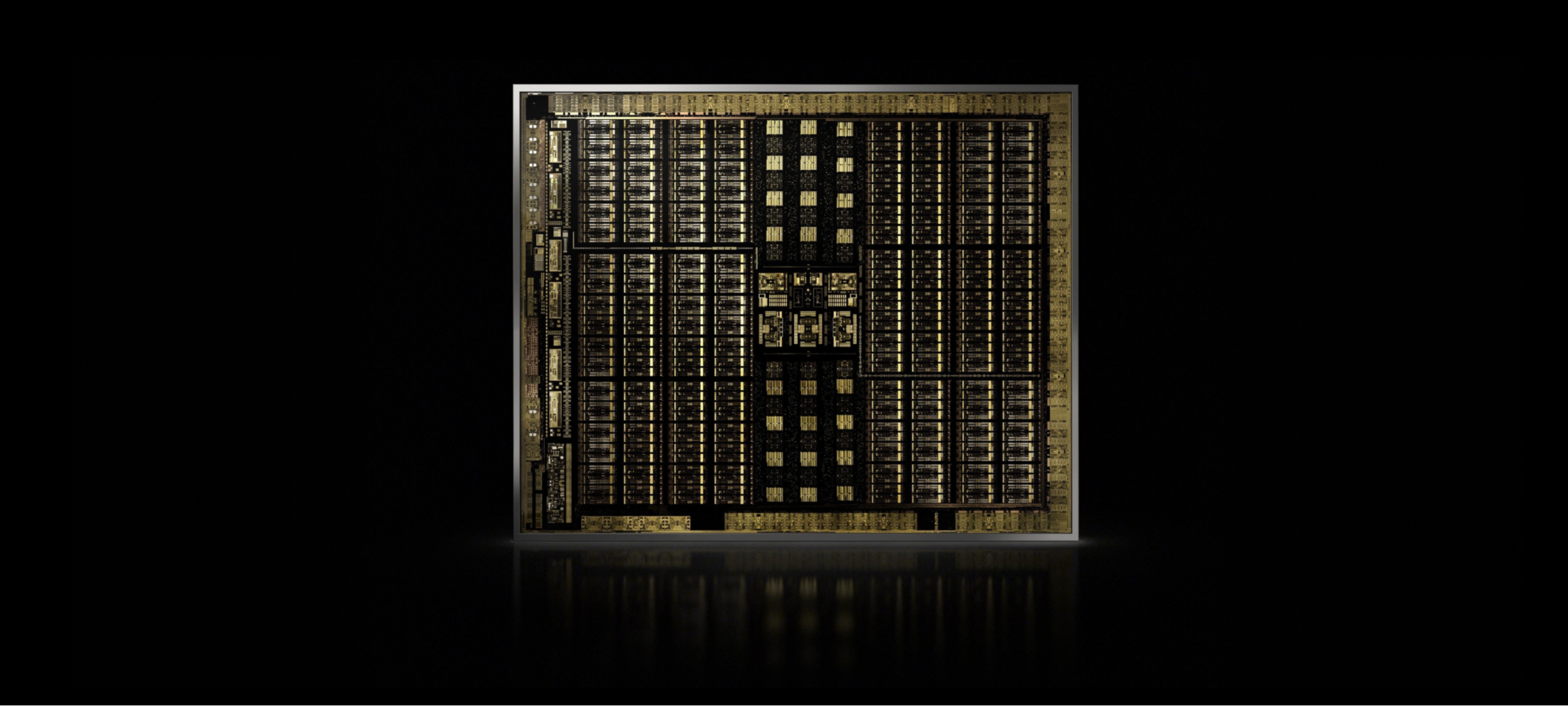

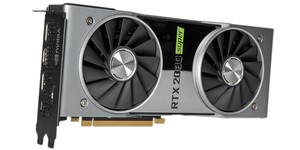
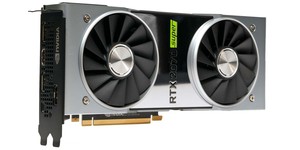




Want to comment? Please log in.